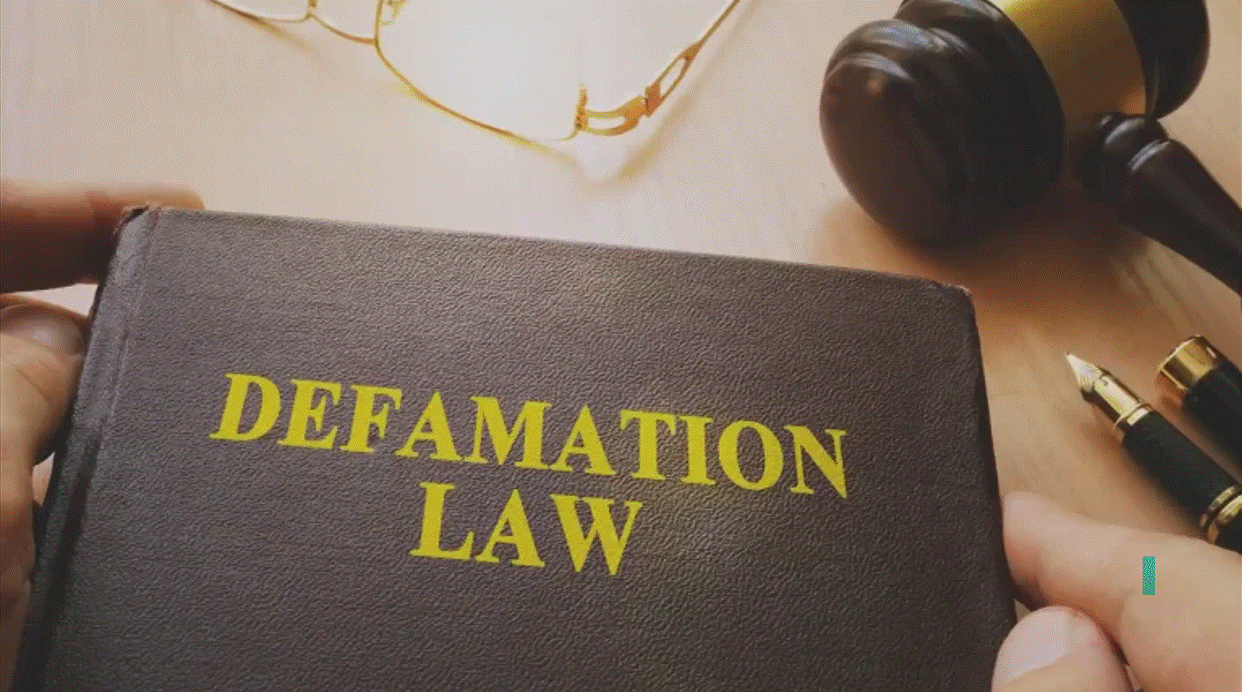- 2 Nov 2025

In an era where online platforms dominate public discourse, Defamation Legal Solutions have become essential for addressing reputational harm. Social media, while offering unprecedented communication freedom, has simultaneously created fertile ground for damaging falsehoods. As a result, individuals and businesses alike are increasingly turning to legal remedies to combat defamation on platforms like Facebook, Twitter (X), Instagram, TikTok, and LinkedIn.
This blog explores actionable Defamation Legal Solutions available for addressing harmful social media content, covering everything from key legal definitions and landmark court interpretations to filing claims and preserving digital evidence. Whether you’re an individual defamed in a viral tweet or a business targeted by a malicious post, understanding the nuances of legal protections can help you reclaim your reputation and pursue justice.
What Constitutes Defamation on Social Media?
Before discussing applicable Defamation Legal Solutions, it’s crucial to define what legally qualifies as defamation. Defamation is a false statement presented as fact that causes harm to someone’s reputation. It falls into two categories:
- Libel: Written defamatory content, which includes tweets, Facebook posts, blog comments, or any form of published online text.
- Slander: Spoken defamatory statements, which may include voice messages, livestreams, or audio recordings.
To constitute actionable defamation under U.S. law, a plaintiff typically must prove:
- A false statement purporting to be fact was published
- The statement was made to a third party
- The speaker was at fault
- The statement caused actual harm to the plaintiff’s reputation
These conditions serve as the legal litmus test for evaluating online defamation and invoking Defamation Legal Solutions.

First Amendment Limits and Liability
While the First Amendment guarantees freedom of speech, it does not protect defamatory statements. Courts have repeatedly upheld that false statements that damage reputations are outside constitutional protections. That said, Defamation Legal Solutions must be carefully structured to respect constitutional boundaries while addressing legitimate reputational harm.
Judicial precedents emphasize the difference between opinions and false factual assertions. For instance, saying “I think John is a liar” may be considered opinion, whereas saying “John committed fraud and stole money from clients” without evidence could qualify as defamatory.
Legal Standing and Who Can Sue
Not everyone can invoke Defamation Legal Solutions successfully. The plaintiff must be identifiable and directly affected. While public figures, such as politicians and celebrities, can sue, they face a higher burden of proof known as “actual malice” — meaning the defendant either knew the statement was false or acted with reckless disregard for the truth.
Private individuals, on the other hand, need only show that the defendant acted negligently in spreading falsehoods. Courts distinguish between these classes to balance public interest, media freedom, and reputational protections.
How Social Media Amplifies Defamation
One social media post can reach millions within minutes. The viral nature of online platforms exponentially increases the damage caused by defamatory statements. This presents unique challenges for Defamation Legal Solutions:
- Permanence: Once published, posts can be screenshotted, reshared, and indexed by search engines.
- Anonymity: Defamers often hide behind pseudonyms, complicating legal redress.
- Global Reach: Jurisdiction becomes murky when defamatory content originates from one country and harms someone in another.
Addressing these complexities requires a nuanced legal approach, leveraging both civil litigation and digital investigation tools.
Preserving Evidence of Online Defamation
A key first step in pursuing Defamation Legal Solutions is evidence preservation. Courts require documented proof of defamatory content, including date-stamped screenshots, URLs, user handles, and engagement metrics. It’s critical to act before content is deleted or altered.
Legal professionals often use tools like Wayback Machine, notarized screenshots, and metadata capture software to ensure courts can validate evidence authenticity. Delay in capturing this data can severely undermine a case.
Filing a Defamation Lawsuit: Step-by-Step Overview
Pursuing Defamation Legal Solutions through civil court generally follows this trajectory:
- Filing the Complaint: This initiates the case, outlining the defamatory statements, parties involved, and resulting harm.
- Service of Process: The defendant must be legally notified, even if anonymous initially.
- Discovery Phase: Both parties exchange evidence and conduct depositions to build the case.
- Motions and Hearings: Defendants may file motions to dismiss or claim immunity.
- Trial or Settlement: Many defamation cases resolve via out-of-court settlements; others go to trial for final judgment.
Plaintiffs may seek compensatory damages for emotional distress, business loss, or punitive damages if malice is proven.
Platform Immunity: Section 230 of the Communications Decency Act
One obstacle to Defamation Legal Solutions on social media is Section 230 of the Communications Decency Act. This federal statute shields platforms from liability for content posted by users. In essence, Facebook or Twitter isn’t liable for defamatory posts unless they themselves contributed to creating the content.
However, recent debates and court interpretations suggest that this immunity is not absolute. Some courts have explored scenarios where platforms amplify or algorithmically promote harmful posts, potentially implicating them in the defamation process.
Referencing evolving legal frameworks from the U.S. Government Publishing Office can help clarify judicial perspectives and pending legislative reforms that may alter the scope of Section 230 immunity.
Identifying Anonymous Defamers Through Subpoenas
Many defamatory posts originate from anonymous users. In such cases, effective Defamation Legal Solutions involve subpoenaing platforms to unmask user identities. Courts may compel social media companies to disclose IP addresses, email accounts, and login histories—especially when compelling evidence of defamation exists.
Courts balance this with First Amendment anonymity protections. Judges typically apply a multi-factor test, weighing the severity of reputational harm against free speech rights before approving disclosure.
Injunctions and Takedown Orders
Besides monetary compensation, Defamation Legal Solutions often involve seeking injunctive relief—court orders compelling the removal of defamatory content. Courts are generally hesitant to issue prior restraints on speech but may allow post-publication takedowns in proven cases of defamation.
Victims may also pursue DMCA takedown requests if the defamatory content violates copyright laws or impersonates the victim using photos, trademarks, or logos.
State Law Variations in Defamation Remedies
While defamation laws share core principles across the U.S., Defamation Legal Solutions vary by jurisdiction. For example:
- Some states allow for retraction demands, requiring plaintiffs to request a public correction before suing.
- Others enforce anti-SLAPP statutes, which protect defendants from frivolous lawsuits intended to silence public discourse.
- Damages caps, discovery rules, and statute of limitations also differ widely.
Filing suit in the wrong jurisdiction or missing procedural deadlines can derail even the strongest defamation claim.
Criminal Defamation and Its Limitations
Although defamation is usually a civil matter, a few states recognize criminal defamation statutes. However, prosecutions are rare and often face constitutional scrutiny. Most victims must rely on civil Defamation Legal Solutions, as criminal charges are reserved for only the most egregious, malicious lies that endanger public safety or provoke violence.
Business and Brand Defamation on Social Platforms
Companies can suffer significant reputational and financial harm from online defamation. False accusations about fraud, product quality, or employee conduct can result in boycotts, investor fallout, or regulatory scrutiny.
Effective Defamation Legal Solutions for businesses may include:
- Cease and desist letters
- Civil lawsuits seeking injunctions and damages
- Online reputation repair through SEO and PR firms
Businesses may also rely on internal compliance teams to monitor and flag defamatory content across review platforms, comment sections, and industry forums.
Defamation by Influencers and Content Creators
Influencer marketing has created new layers of liability. When influencers publish defamatory content under the guise of personal opinion or product reviews, victims often seek Defamation Legal Solutions under libel laws.
Even disclaimers like “this is just my opinion” don’t guarantee protection. Courts examine whether the content implies provable false facts. Influencers with large followings may face greater accountability due to their persuasive impact.
False Reviews and Weaponized Content
Review sites like Yelp, Google, and TripAdvisor are frequent battlegrounds for defamatory claims. One-star reviews based on fabricated narratives can severely damage local businesses. While platforms often resist intervention, litigation sometimes forces review removal if defamation is proven.
Modern Defamation Legal Solutions in this context often include defamation per se claims, where the statements are so inherently damaging that harm is presumed—such as false allegations of criminal activity, sexual misconduct, or professional incompetence.
Monetary Damages in Defamation Cases
A key element in pursuing Defamation Legal Solutions is quantifying harm. Courts evaluate:
- Economic losses (clients lost, revenue dips)
- Emotional suffering (anxiety, public humiliation)
- Punitive damages (to punish malicious conduct)
Supporting evidence such as financial records, psychological evaluations, and testimonial affidavits can help substantiate these claims.
Alternative Resolution: Demand Letters and Settlement
Not every case requires full litigation. In many instances, a formal cease and desist or demand letter—detailing the falsehood, legal standards violated, and damages incurred—can prompt retraction and settlement.
These pre-litigation strategies often save time, money, and public exposure, especially in social media disputes that could worsen with publicity.
Digital Reputation Management as a Complementary Strategy
Besides legal proceedings, Defamation Legal Solutions can include digital reputation repair. Techniques involve publishing positive content, removing defamatory results from search indexes, and displacing false information using SEO.
While not a substitute for litigation, these strategies can help mitigate long-term reputational damage and restore credibility.
When Defamation Intersects with Wrongful Death Claims
Defamatory statements often intersect with other high-stakes legal matters like wrongful death cases. For example, accusing someone of responsibility for a death without proof could escalate into a defamation suit. To understand the broader legal framework in such situations, you can explore how Chicago courts handle complex wrongful death claims and how defamatory narratives may shape or misrepresent those proceedings. Read this comprehensive overview for further context.
Final Thoughts on Protecting Reputations in the Social Media Age
Social media has drastically shifted the landscape of reputational risk. In this environment, Defamation Legal Solutions serve as both a shield and sword—protecting individuals and businesses from slanderous narratives while holding online actors accountable. From evidence preservation to injunctive relief and damages claims, today’s legal toolbox offers robust options for navigating defamatory harm in a digital-first world.
Understanding your rights, documenting your case, and engaging strategically with legal avenues is crucial. With proper use of available legal mechanisms, victims of social media defamation can regain their standing and push back against reputational sabotage.
Recent posts
- 17 Oct 2025
Categories
- Accident & Injury Law (54)
- AI (1)
- Copyright Law (1)
- Criminal & Civil Law (17)
- Disability Law (2)
- Driving Law (2)
- Employment Law (1)
- Estate Planning (2)
- Family & Relationship Law (29)
- Food and Drink (2)
- Gas Exposure (1)
- Health (1)
- Immigration Law (2)
- Injury Claim (1)
- Insurance Law (7)
- Legal (40)
- Lemon Law (4)
- Mediation (3)
- Medical Malpractice (1)
- Property & Business Law (9)
- Severance Agreement (1)
- Travel and Leisure (1)
- Uncategorized (12)
- Worker Compensation (2)

